Are you interested in turtles? Are you doing research or just investigating for fun? Either way, this is the article for you!
This article contains eleven types of both land and sea turtles complete with their basic rundown and characteristics. No doubt you will satisfy your curiosity about the turtles in Florida.
Special Note
It is best not to approach these turtles in the wild as they may get territorial, anxious, and even aggressive when feeling threatened.
Table of Contents
1. Florida Box Turtle
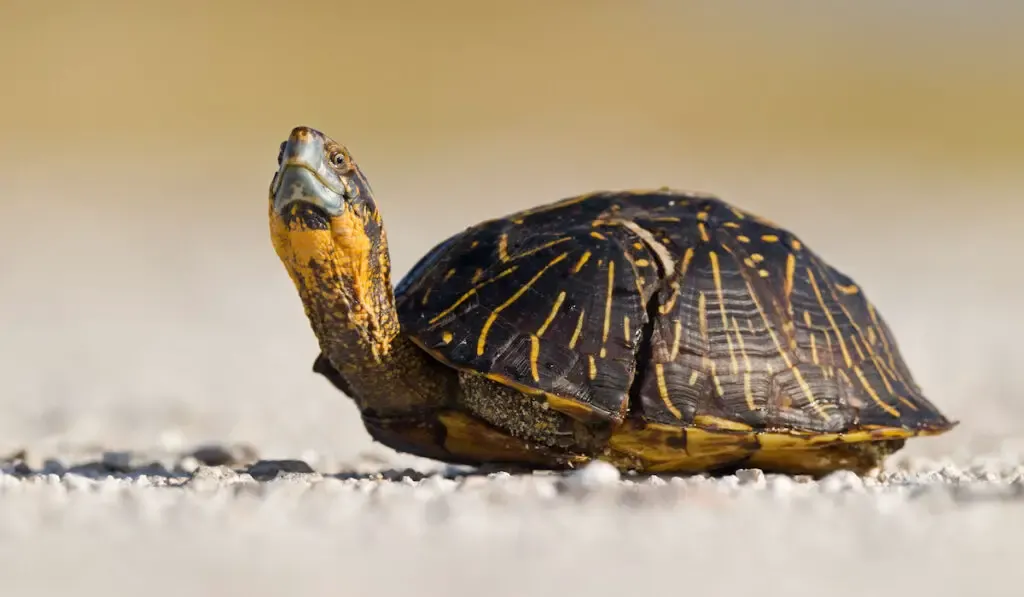
The Florida box turtle first originated in Florida and is today found among heavily vegetated areas including marshes, swamps, and grasslands. These turtles may be around 4–5 inches long and weigh around 1–2 pounds, making them one of the smaller breeds.
The Florida box turtle can be characterized by its dark brownish-black shell with an off-yellow star-like pattern. These turtles have dark brown bodies with various patterns in yellows and browns.
The Florida box turtle is known to be kind and social among others, nevertheless, they live independently. These turtles are often able to be kept as pets if given enough space and enrichment.
2. Loggerhead Sea Turtle
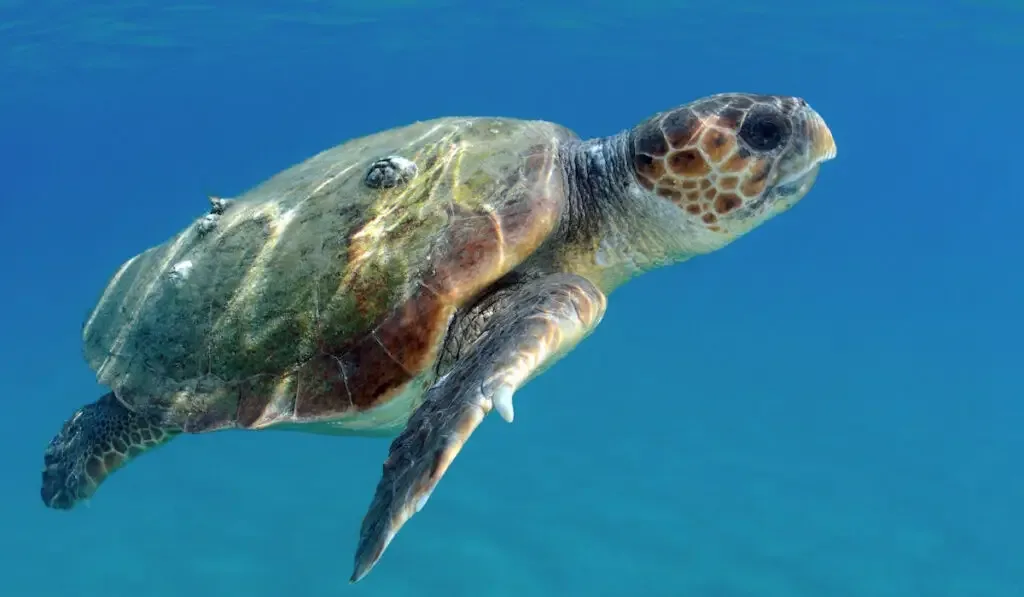
The loggerhead sea turtle first originated in Florida and is today found in the tropical and warm regions of the Indian, Atlantic, and Pacific Oceans. These turtles can grow as big as 45 inches long and weigh up to 155–375 pounds as adults.
These turtles can be characterized by their large heads accompanied by powerful and sturdy jaws. Their shell is a soft, roundish heart shape complete with a reddish-brown color.
The loggerhead sea turtle is solitary yet friendly; they are independent and highly intelligent. One fun fact about these turtles is there are an estimated 40,000–50,000 females currently nesting.
3. Florida Red-Bellied Cooter Turtle
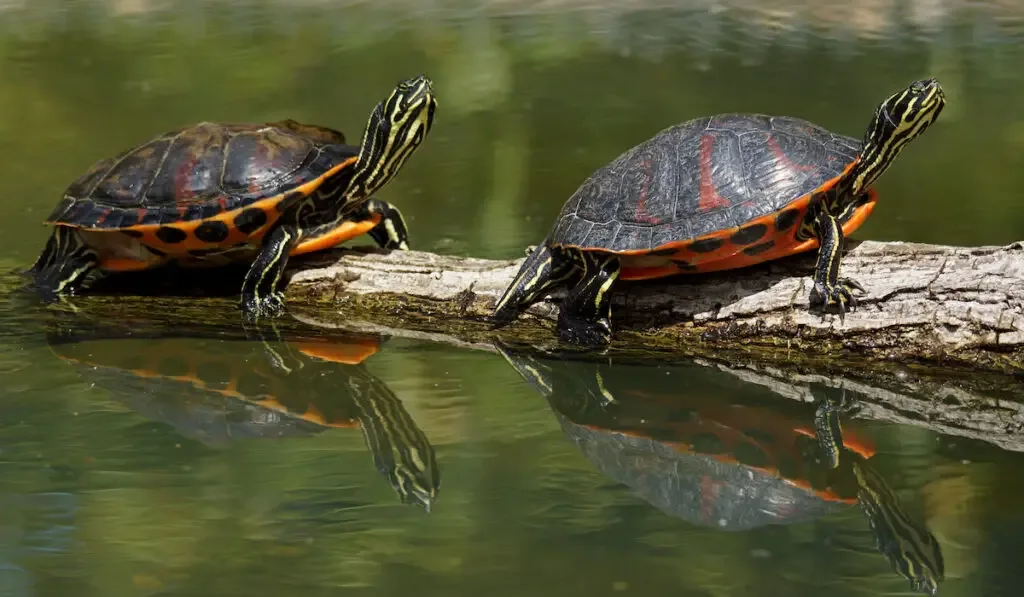
The Florida red-bellied cooter turtle first originated in both Georgia and Florida. Today, these turtles are found in Florida, Georgia, Virginia, and Maryland in lakes, streams, and rivers.
The red-bellied cooter grows 8–15 inches in length and weighs around 6–8 pounds. These turtles can be distinguished by their smaller size, dark brownish-black shell, and a red-patterned underbelly. These turtles are complete with a yellow and black neck pattern.
The red-bellied cooter turtle is one of the more social breeds, yet is still independent and can grow hostile when it feels threatened. These turtles are able to be kept as pets if given a large space with enough enrichment to allow them to thrive.
4. Yellow-Bellied Slider Turtle
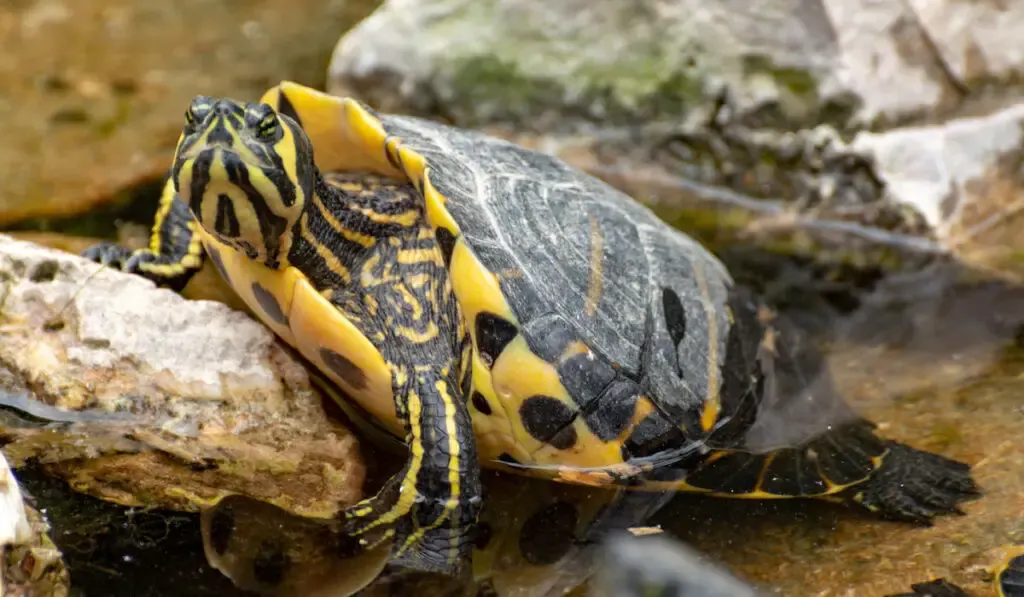
The yellow-bellied slider turtle first originated in Florida, nevertheless, they can be found in most areas of the Southeastern United States, commonly swamps, marshes, and rivers. These turtles grow from 12–24 inches long and may weigh up to 8–9 ounces as they are one of the smaller breeds.
The yellow-bellied slider can be defined by its oval-shaped shell complete with a dark green color and yellowish markings, and of course, its yellow-tinted underbelly. These turtles are independent and are not interested in being handled or touched.
The yellow-bellied slider can be kept as a pet if cared for properly, which includes a large clean space for them with enrichment and plenty of food. These turtles live in the water but often come onto land to lay in the sun.
5. Leatherback Sea Turtle
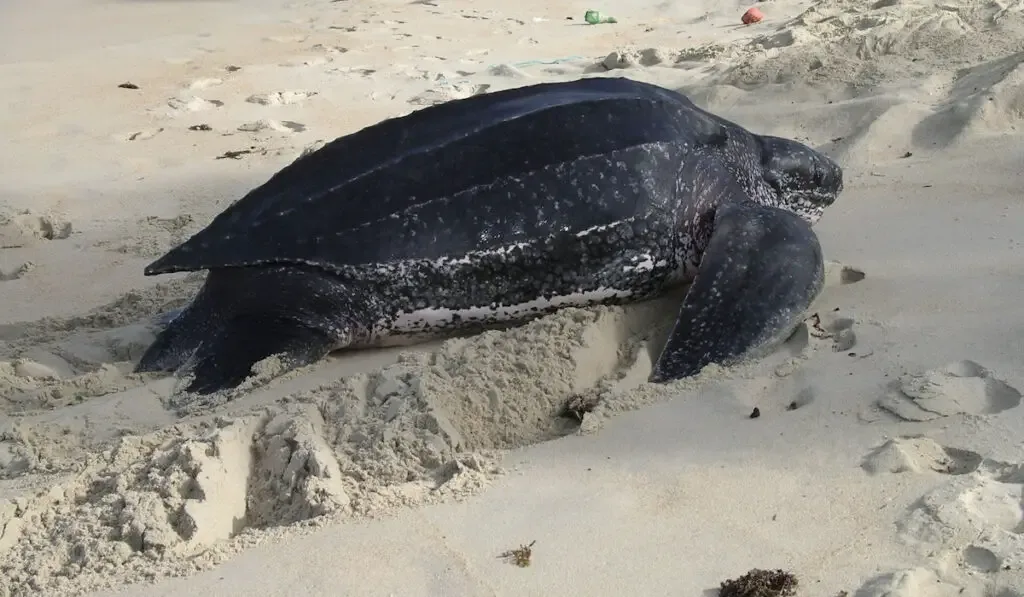
The leatherback sea turtle first originated in Florida and is today found all over the Pacific, Atlantic, and Indian Oceans. The Leatherback sea turtle is the largest turtle in the world and is protected as they are an endangered species.
These turtles may be up to 4–6ft in size and weigh around 500–1,000 pounds. These turtles are characterized by their large, black, leathery shells and black rubbery bodies, and they are the only sea turtle that lacks scales.
The leatherback sea turtle is highly independent and refrains from socializing with others unless mating or nesting. One fun fact about these turtles is their shell is made up of rubbery, tough, thin skin, accompanied by thousands of tiny bones creating a “leathery” look.
6. Alligator Snapping Turtle
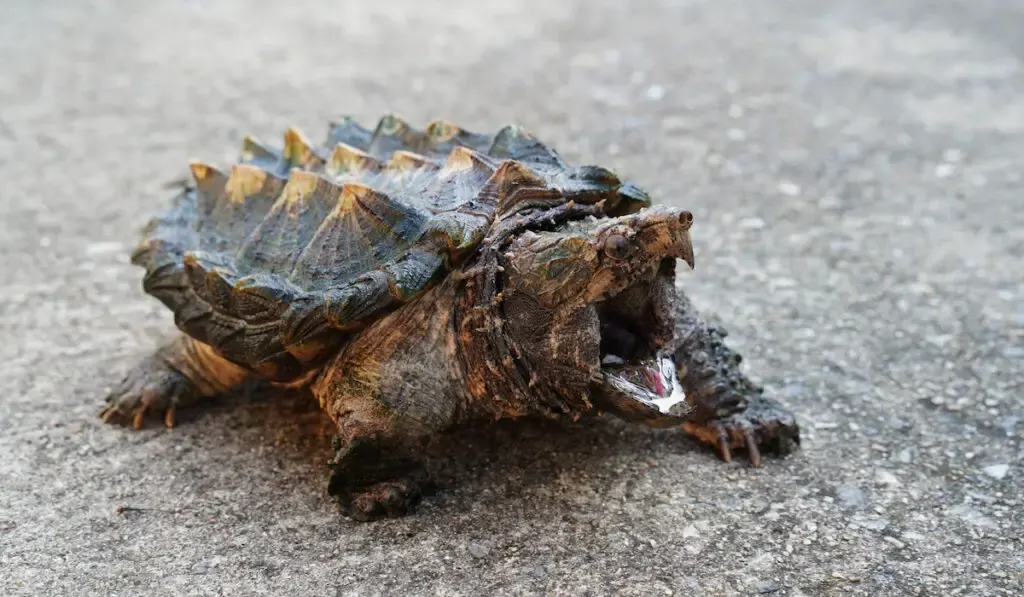
The alligator snapping turtle first originated in North America and is today found in Florida, Texas, and Iowa, living in rivers, lakes, and canals. Named for its incredibly strong jaws, these turtles have a rigid and rough-textured shell.
The alligator snapping turtle can grow up to around 30 inches and weighs around 170–200 pounds. This turtle is defined by its rough dark body and shell, looking almost like a prehistoric dinosaur.
These turtles are aggressive and are known to have a hostile personality, especially when feeling threatened.
The alligator snapping turtle has a biting force of around 1,000 pounds, which can not only bite through the skin of its prey but through bone as well. These turtles will bite if feeling threatened or under attack yet will not bite without reason. It is advised to not handle these turtles in the wild.
7. Florida Chicken Turtle
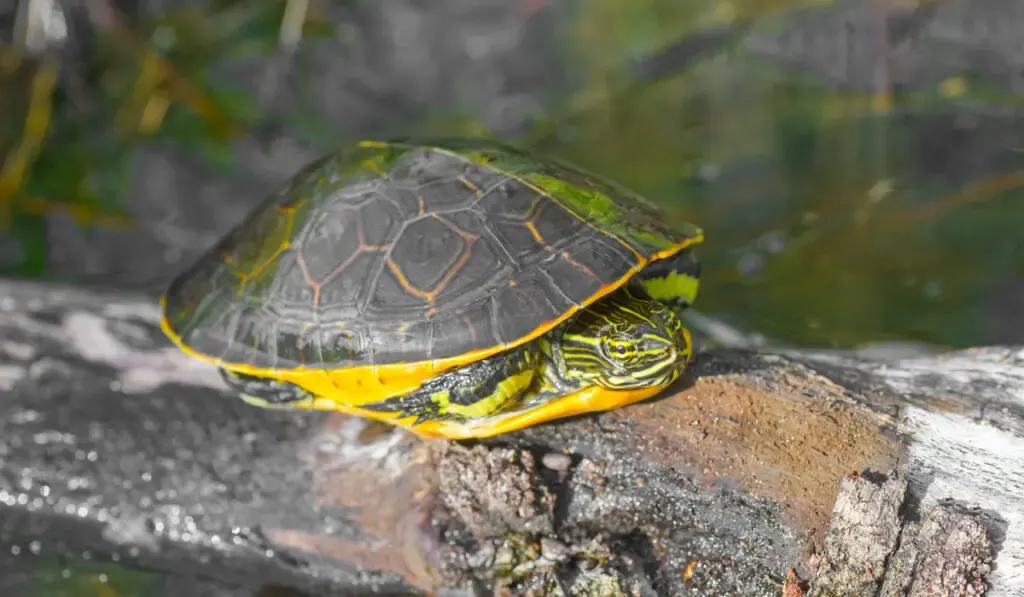
The Florida chicken turtle first originated in Florida, named for its long and distinguished neck, like a chicken. Today, these turtles can be found in Southeastern Florida among vegetated ponds, lakes, and rivers.
The Florida chicken turtle can be up to 6–9 inches and weigh around 30 ounces, making them one of the smaller breeds like that of the yellow-bellied slider.
These turtles can be defined by their dark blackish-brown shells and yellow patterns on their body.
The Florida chicken turtle is highly independent, and cautious, and can be quite hostile when feeling threatened. These turtles, even with proper care and space, have a lifespan of around 15 years, depending on gender, diet, and activity level.
8. Florida Softshell Turtle
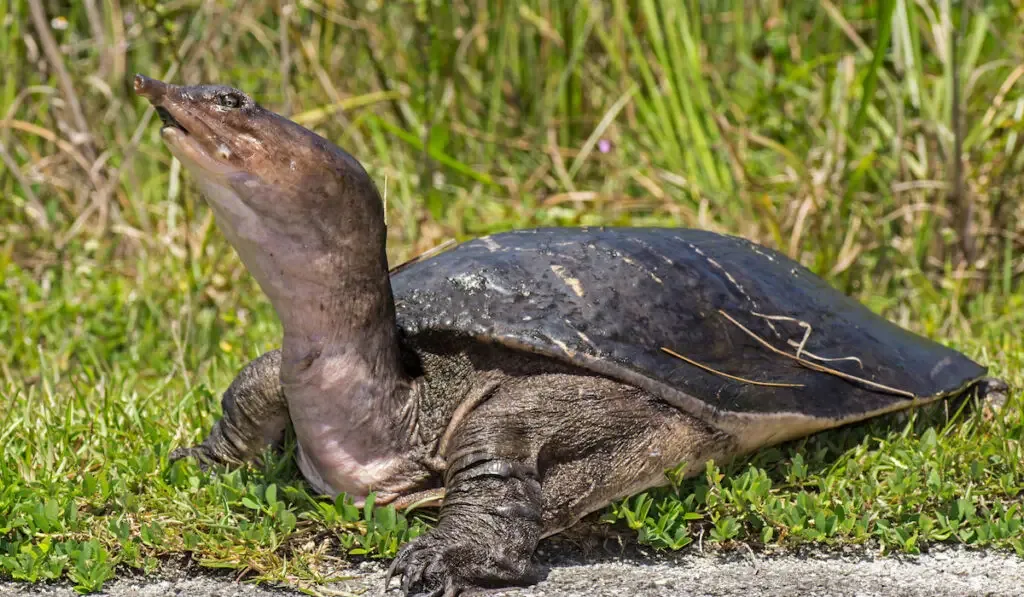
The Florida softshell turtle first originated in Florida. Today, they are found in Florida, South Carolina, and Georgia in lakes, rivers, and streams. These turtles can grow around 9–11 inches long and may weigh around 96 pounds.
The Florida softshell turtle can be characterized by its olive and dark brown shell, which are known to have a softer texture and feel than that of other species. Their necks are long and brown, containing small bumps.
The Florida softshell turtle is independent and may become aggressive when feeling threatened. In addition, they may produce a distinct musk that can scare off predators and make themselves known to others.
9. Loggerhead Musk Turtle
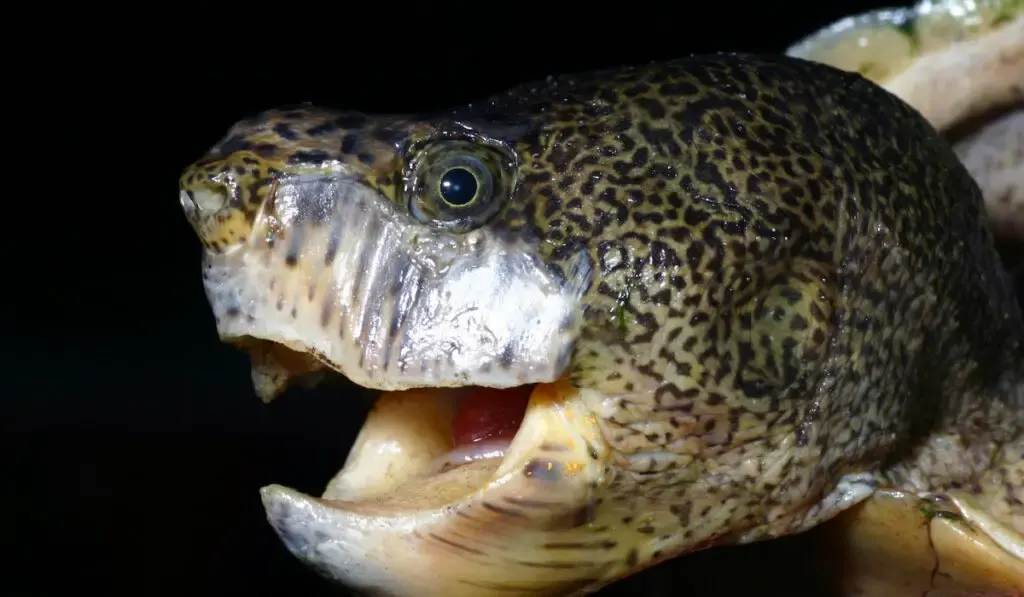
The loggerhead musk turtle first originated in Eastern Canada and is today found among the coasts of Florida, Georgia, and Alabama. These turtles may grow anywhere from 3–5 inches, making them one of the smaller breeds, and they may weigh around 4–6 ounces.
The loggerhead musk turtle can be defined by its light to dark brown-patterned shell and grayish-black body.
Named for their large head-to-body ratio, these turtles can produce a strong musk that makes them known to others and is used as a defense mechanism among threats.
The loggerhead musk turtle is known to be solitary, residing mostly among deeper waters, they rarely socialize with others unless necessary. In addition, these turtles are seldom found basking in the sun as they prefer water and do not do well in environmental changes.
10. Florida Mud Turtle

The Florida mud turtle first originated in Florida and is today found among marshes and ponds as they prefer vegetated yet smaller areas. These turtles may grow up to 4–5 inches and weigh around 10–30 pounds.
The Florida mud turtle can be described as having a dark blackish-brown shell with a brown-patterned underbelly complete with a stout yet durable head and jaw. The personality of these turtles varies, as they are gentle and tame, yet can become aggressive when feeling threatened.
The Florida mud turtle can be kept as a pet if kept in a large clean environment accompanied by vegetation and enrichment. A fun fact about these turtles is although they thrive in freshwater, they are occasionally known to tolerate and wander on saltwater coasts.
11. Red Eared-Slider Turtle

The red-eared slider turtle first originated in Mississippi but is today found in Florida, Virginia, Mississippi, and Mexico, thriving in streams, ponds, and lakes. These turtles can grow anywhere from 5–11 inches and weigh around 8–9 ounces, as one of the smaller breeds.
Named for their ears, these turtles can be distinguished by their red-toned ears, yellow-striped body, and blackish-brown colored shell. The red-eared slider turtle is known to be highly intelligent and kind yet also independent.
The red-eared slider turtle is able to be kept as a pet and has the ability to recognize and even build a bond with their owners. However, like most animals, these turtles require a large amount of space and enrichment to thrive.
Special Note
The information listed in this article is not a substitute for medical advice. If you have an emergency, turtle-related or otherwise, it is best to contact emergency services.
Final Thoughts
Overall, Florida is abundant in not only sun and palm trees but turtles too! Both freshwater and saltwater! These turtles thrive in warm climates and some may even be kept as pets.
Nevertheless, these turtles should not be handled or touched in the wild to ensure they are protected and happy. In addition, some of these turtles may become aggressive or hostile when engaging with humans, so it is best to stay away and admire from afar.
Whether you were looking for a new pet or just interested in turtles, this article covered a wide range of Florida turtles. We hope you enjoyed this article. Thank you!
Resources
- https://a-z-animals.com/blog/10-types-of-turtles-in-florida/
- https://www.allturtles.com/turtles-in-florida/
- https://www.fisheries.noaa.gov/species/loggerhead-turtle
- https://tpwd.texas.gov/huntwild/wild/species/logghead/
- https://www.fisheries.noaa.gov/species/leatherback-turtle
- https://cubcreeksciencecamp.com/programs-activities/meet-our-animals/reptiles-amphibians/yellow-bellied-slider/
- https://www.thesprucepets.com/yellow-bellied-sliders-1238384
- https://srelherp.uga.edu/turtles/deiret.htm
- https://nationalzoo.si.edu/animals/alligator-snapping-turtle
- https://www.nationalgeographic.com/animals/reptiles/facts/alligator-snapping-turtle
- https://myfwc.com/wildlifehabitats/profiles/reptiles/freshwater-turtles/florida-softshell-turtle/
- https://animalia.bio/florida-red-bellied-cooter
- https://www.chesapeakebay.net/discover/field-guide/entry/red-bellied-turtle
- http://www.britishcheloniagroup.org.uk/testudo/v3/v3n3loggerhead
- https://myfw
- https://myfwc.com/wildlifehabitats/profiles/reptiles/freshwater-turtles/box-turtles/
- https://myfwc.com/wildlifehabitats/profiles/reptiles/freshwater-turtles/striped-mud-turtle/
- https://wildlife.ca.gov/conservation/invasives/species/redeared-slider
- https://www.petmd.com/rc/red-eared-slider-trachemys-scripta-elegans
- https://www.news-press.com/story/life/outdoors/2015/12/19/wild-file-florida-box-turtle-stetson-yellow/77267258/
- https://www.allturtles.com/florida-red-bellied-cooter/
- https://conserveturtles.org/information-sea-turtles-loggerhead-sea-turtle/
- https://www.nwf.org/Educational-Resources/Wildlife-Guide/Reptiles/Alligator-Snapping-Turtle
- https://www.herpedia.com/turtles/kinosternidae/florida-mud-turtle.html
- https://wildlife.ca.gov/conservation/invasives/species/redeared-slider
- https://www.outdooralabama.com/turtles/loggerhead-musk-turtle
- https://animalia.bio/florida-softshell-turtle
